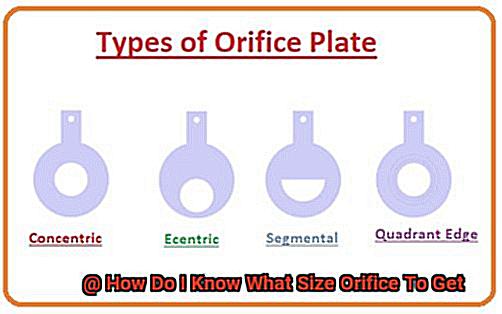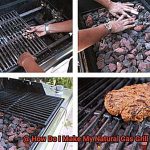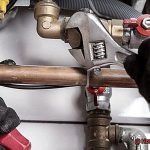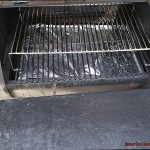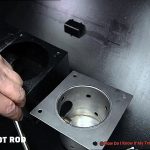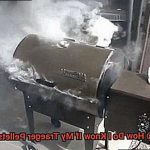Are you struggling to figure out the right size orifice for your gas appliance? Maybe you’re a curious DIYer who wants to learn more about orifices and their role in gas appliances. Whatever your reason, we’ve got your back.
Selecting the correct orifice size is critical for ensuring that your gas appliance runs safely and efficiently. An undersized orifice can lead to weak flames and reduced heating power, while an oversized one can cause dangerous and inefficient burns.
So, how do you determine the right size for your orifice? Factors such as the type of gas, BTU rating of the appliance, and desired flame height all play a crucial role in selecting the appropriate size. It may seem like a complex and technical process, but don’t worry – we’re here to help.
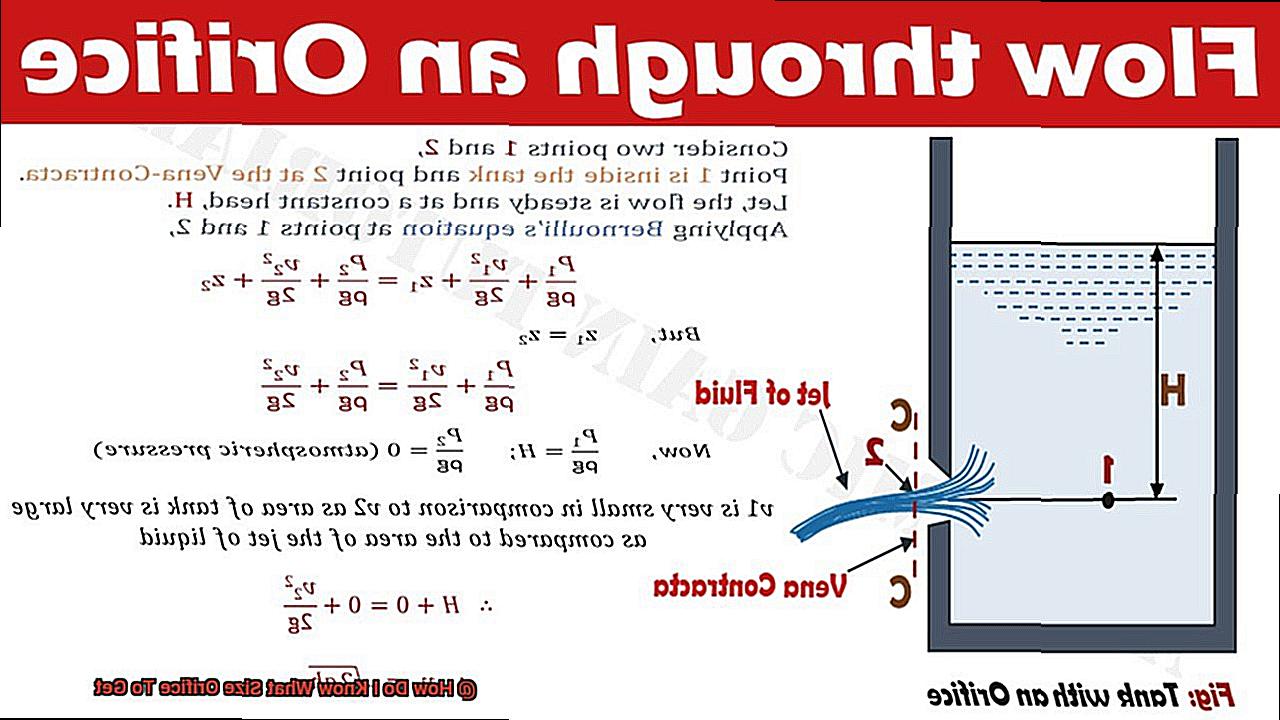
In this post, we’ll walk you through the steps of determining the perfect size orifice for your gas appliance. By the end of this article, you’ll have all the knowledge and confidence needed to select the right orifice and keep your gas appliance operating safely and efficiently.
Contents
What is an Orifice and Why Does Size Matter?
One vital piece of equipment that affects how well your grill operates is the orifice. But what exactly is an orifice, and why does its size matter?
Simply put, an orifice is a small opening or hole that allows gas, liquid, or air to flow through. In the grilling world, it regulates the flow of fuel to the burners and affects the heat output of the grill. The size of the orifice determines how much fuel flows through it, affecting both the efficiency and safety of your grill.
But how do you determine the right size orifice for your grill? Several factors come into play. Firstly, consider the type of fuel you use. Natural gas requires a larger orifice than propane due to its lower pressure. Secondly, consider the size of your grill and the number of burners it has. A larger grill with more burners will require larger orifices to ensure each burner receives enough gas to operate correctly.
However, altitude can also play a role in determining the size of the orifice needed. At higher altitudes, air pressure is lower, which can affect gas flow through the orifice. In such cases, you may need to use a smaller orifice to compensate for reduced air pressure.
When selecting an orifice, it’s crucial to consider all these factors as using an incorrect size can pose safety hazards. An oversize orifice can produce too much heat, damaging your grill and causing fire hazards. Conversely, a small one can cause your grill to run too hot, also posing safety risks.
The size of the orifice is measured in terms of diameter and usually ranges from 0.45 mm to 1.5 mm for gas grills depending on the type and brand of the grill. A larger orifice will allow more fuel to flow into the burner, which will increase the heat output of the grill. Conversely, a smaller orifice will restrict the flow of fuel and reduce the heat output.
Factors to Consider When Choosing the Right Orifice Size
Grilling is a culinary art that requires precision and attention to detail. One of the key factors that can make or break your grilling experience is choosing the right orifice size for your grill. As an expert in this field, I have researched and compiled a list of factors to consider when selecting the perfect orifice size for your grill.
First and foremost, the fuel type you’re using plays a crucial role. Natural gas and propane have different pressure levels, which means they require different sizes of orifices. Using the wrong size orifice can lead to safety hazards, so it’s important to know the difference.
The BTU rating of your grill is also an essential factor to consider. This rating determines how much heat your grill can produce per hour. The higher the BTU rating, the larger the orifice size needed. If you’re planning on hosting a big BBQ party, you’ll need a higher BTU rating and a larger orifice size to accommodate for the increased demand.
Altitude is another crucial factor that affects gas pressure. At higher altitudes, there is less air pressure, which means less gas will flow through the orifice. To compensate for this lower air pressure, you’ll need a larger orifice size.
When it comes to burners, the number of ports also matters. A burner with a higher number of ports will require a larger orifice size than one with fewer ports. This is because more gas needs to flow through the orifice to maintain consistent heat across all ports.
Lastly, it’s essential to consider the size of your grill and the number of burners. A larger grill with more burners will require larger orifices to accommodate for increased gas flow needed to maintain consistent heat.
Fuel Type: Natural Gas vs Propane
As a grill master, you know that a perfect sear on your steak or beautiful grill marks on your veggies are essential for a successful cookout. But did you know that choosing the right fuel type can make all the difference? Two popular options are natural gas and propane, but there’s more to it than just picking one or the other.
Let’s start with natural gas. If you’re lucky enough to have a natural gas line connected to your home, you can enjoy the convenience of never running out of fuel mid-cookout. However, it’s important to note that natural gas requires a larger orifice size than propane due to its lower pressure. Using a propane-sized orifice with natural gas can result in a weak flame and uneven cooking. And let’s be honest, no one wants that. So before firing up your grill, make sure to check your grill’s owner’s manual or contact the manufacturer to ensure you’re using the correct size of orifice for natural gas.
Now let’s talk about propane. This fuel type is more commonly used for portable grills or for those without access to a natural gas line. Propane requires a smaller orifice size than natural gas due to its higher pressure. But using a natural gas-sized orifice with propane can lead to too much fuel being released into the grill, which can cause dangerous flare-ups and singed eyebrows. Yikes. So be sure to use the correct size of orifice for propane as well.
Grill Size and Number of Burners
As a grill master, you know that the perfect cookout is all about the right combination of heat, meat, and seasoning. But did you know that the size of your grill and the number of burners it has can also affect the orifice size needed for optimal performance? It’s true – choosing the correct orifice size is just as important as selecting the right fuel type when it comes to grilling.
Let’s dive deeper into this topic. The orifice size determines the flow rate of gas to the burners, which directly affects the heat output of your grill. For smaller grills with one or two burners, a smaller orifice size is usually sufficient since less gas is required to heat a smaller cooking area. However, larger grills with more burners require a larger orifice size to accommodate the higher flow rate of gas needed.
But that’s not all. Some grills have different orifice sizes for different burners. If you have a larger grill with a side burner or a rotisserie burner, it’s crucial to ensure even heat distribution by choosing the correct orifice size for each individual burner.
So how do you determine the correct orifice size for your grill? The best way is to consult your grill’s manual or contact the manufacturer directly. They can provide you with recommended orifice sizes based on your specific model’s size and number of burners. It’s vital to follow their recommendations to guarantee safe and efficient operation of your grill.
To sum up, when it comes to grilling, every detail matters – including the size of your grill and the number of burners it has. By taking these factors into account and selecting the correct orifice size, you can ensure that your cookout is flawless every time. Here are some key takeaways:
Altitude Considerations
Imagine the sun setting over a serene mountain range as you prepare to grill your favorite meal. Before you get too ahead of yourself, did you know that your altitude could affect your grilling experience? The air pressure at higher altitudes is lower than at sea level, which can impact the amount of gas flow through the orifice. This is why altitude considerations are crucial when determining the correct orifice size for your grill.
At higher altitudes, less air enters the grill, resulting in less oxygen being available to mix with the gas. To compensate for this, you will need a smaller orifice size. Using the same orifice size at high altitudes as at sea level will lead to too much gas in the mixture, which could be dangerous.
So how do you determine the correct orifice size for your grill at high altitudes? Your grill’s owner manual or manufacturer can provide specific information on how to adjust the orifice size based on altitude and other factors. Taking this extra step ensures that your grill operates safely and efficiently no matter where you are cooking.
It’s worth noting that altitude considerations don’t just apply to mountainous regions. Even areas just a few thousand feet above sea level can experience enough of a difference in air pressure to affect gas flow through the orifice.
Professional Advice on Orifice Sizing
It’s like finding the perfect fit for your favorite pair of shoes – too tight, and you’re uncomfortable; too loose, and you’re tripping up.
To ensure your gas grill operates safely and efficiently, you need to consider several factors when selecting the correct orifice size. Fuel type, BTU rating, and manifold pressure are just a few critical elements to keep in mind.
Firstly, different fuel types require different orifice sizes. Propane grills need a smaller orifice size than natural gas grills due to the higher pressure of propane. For propane grills, a typical orifice size is 0.040 inches, while natural gas grills need a larger orifice size of around 0.055 inches.
Secondly, the burner’s BTU rating plays a significant role in determining the orifice size required for optimal performance. A higher BTU rating requires a larger orifice diameter to provide enough gas flow to the burner. However, it is crucial to note that selecting an orifice that is too large can lead to inefficient use of fuel and inconsistent temperatures.
Finally, the grill’s manifold pressure is another critical factor to consider when sizing an orifice. The manifold pressure refers to the pressure at which gas flows through the grill’s regulator and into the burner. It is essential to ensure that the orifice size matches the manifold pressure to prevent dangerous situations such as gas leaks.
Tips for Getting the Right Orifice Size
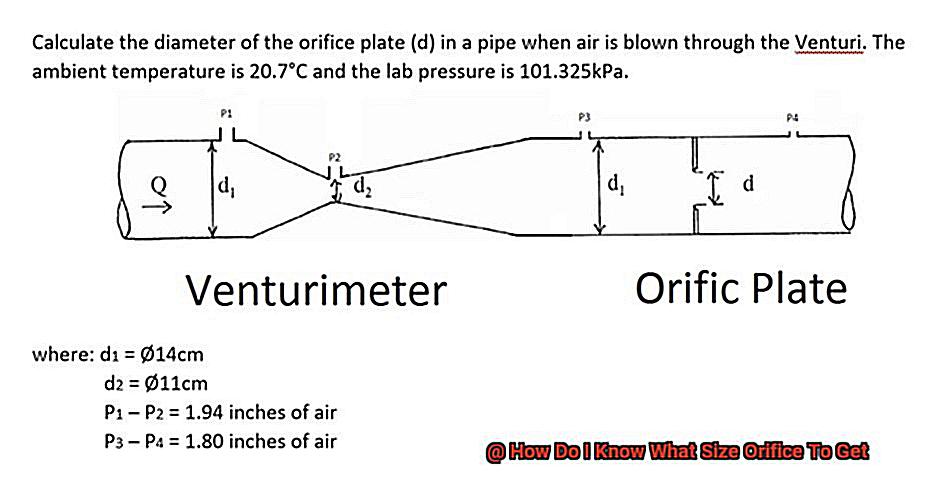
Grilling is a popular pastime enjoyed by many, but to truly master the art of grilling, you need to have the right equipment. One of the most important components of a grill is its orifice size. Whether you’re a seasoned pro or a beginner, getting the right orifice size is crucial for achieving optimal grilling results and ensuring your safety.
Check the manual
The first step in determining the correct orifice size for your grill is to check the manufacturer’s manual. The manual should provide information on the correct orifice size for your specific grill model. If you have lost your manual, try contacting the manufacturer or looking online for a digital copy.
Measure the burner opening
If you don’t have access to the manual, you can measure the burner opening to determine the correct orifice size. Use a ruler or tape measure to measure the diameter of the burner opening and compare it to a sizing chart to find the appropriate orifice size. It’s important to be as accurate as possible when measuring, as even a small deviation can affect your grilling results.
Consider altitude
Altitude can affect the performance of your grill, so it’s important to take it into account when choosing an orifice size. At higher altitudes, the air is thinner, which can cause combustion problems if the orifice is too big. Consult a sizing chart or consult with a professional to find the correct orifice size for your specific altitude.
Seek professional help
If you are unsure about which orifice size to choose, seek help from a professional. A licensed technician can help you determine the correct orifice size based on your specific grill model and altitude. This may cost more than doing it yourself, but it’s worth it for your safety and peace of mind.
Regularly inspect and clean your grill’s orifices
To ensure optimal performance, it’s important to regularly inspect and clean your grill’s orifices. Debris and rust buildup can clog the orifices and affect gas flow, leading to poor grilling results and potentially dangerous situations. Clean the orifices with a soft-bristled brush and warm soapy water, being careful not to damage the threads.
Conclusion
In summary, choosing the right orifice size for your gas appliance is crucial for a safe and efficient grilling experience. The type of gas, BTU rating, altitude, grill size, and number of burners are all important factors to consider when selecting the appropriate size. Don’t let the process overwhelm you – by following some key tips and taking these factors into account, you can confidently choose the best orifice size.
It’s important to remember that an undersized orifice can result in weak flames and reduced heating power, while an oversized one can cause dangerous and inefficient burns. The amount of fuel flowing through the orifice determines both efficiency and safety.
Always refer to your grill’s owner’s manual or consult with the manufacturer to determine the recommended orifice size for your specific model. If you’re measuring yourself, make sure to be precise when measuring burner openings and take altitude into consideration if necessary. Seeking professional assistance is always an option if you’re unsure about which orifice size to choose.
Lastly, don’t forget to regularly inspect and clean your grill’s orifices to ensure optimal performance. Buildup of debris can clog the orifices and affect gas flow, leading to poor grilling results and potentially hazardous situations.

